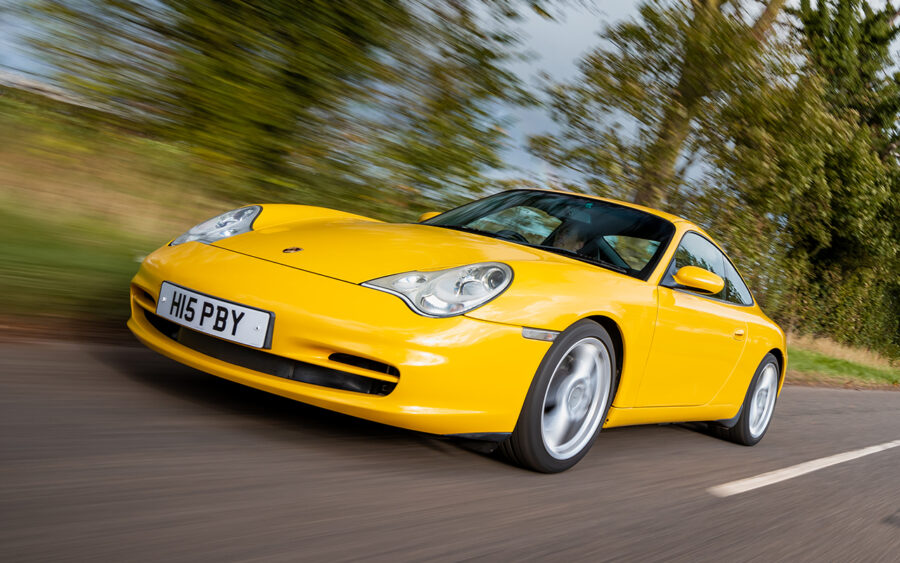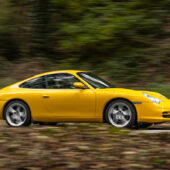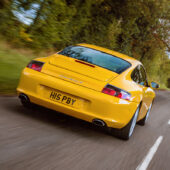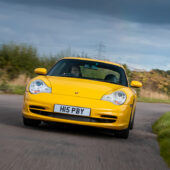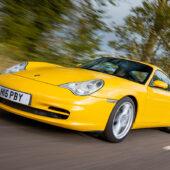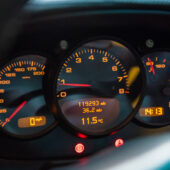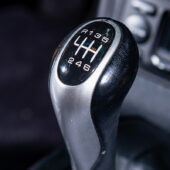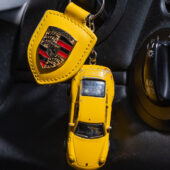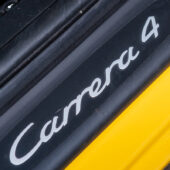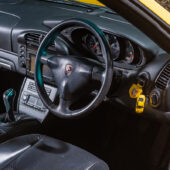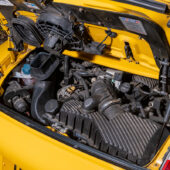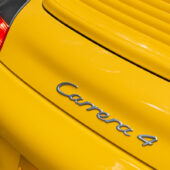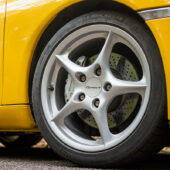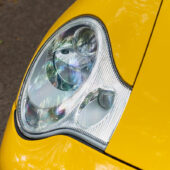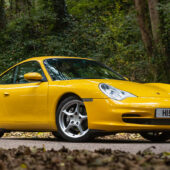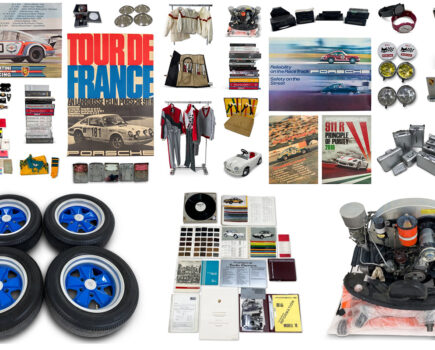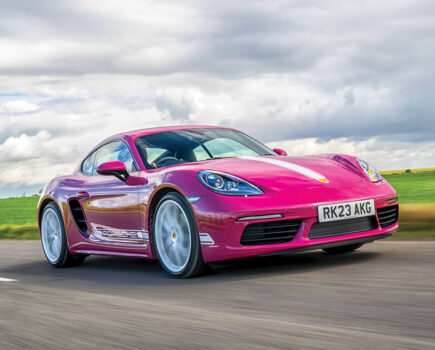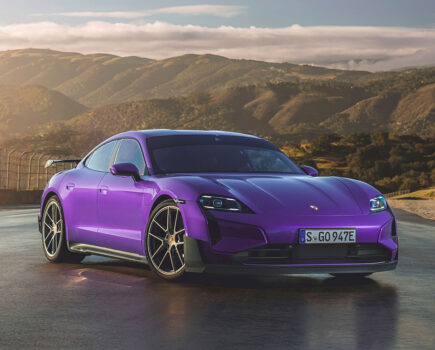The 996 is the entry point into Porsche 911 ownership these days – and a very fine one at that. Here’s how to buy a great example
Words: Dan Furr, Danny Kaye, Emma Woodcock, Russ Stanley
Despite the ever-strengthening prices of old Porsche 911s, there’s still hope for those of us with more modest budgets. The 996-generation car represents the 911 entry point; with the help of careful checks, you should be able to pick up a bargain. However, if you get too excited about the lowish price tag, your new 996 could turn out to be an expensive headache.
Manufactured between 1997 and 2004 (two further years for Turbo S, GT2 and GT3 models), the 996 was the first 911 to feature a water-cooled engine, replacing the 993-generation car. Despite grumblings from Porsche purists, the model proved a hit with the wider motoring public — worldwide sales figures of more than 175,000 units made the 996 one of the company’s most popular products.
Lofty sales figures means there are presently plenty of 996s available for those delving into the used car market. Despite the 996’s healthy reliability record, however, not all of the available examples are sound buys. Choose a 996 which has been properly maintained and you can look forward to years of enjoyable driving, but pick one neglected by its owners and you can expect sizeable repair bills. A comprehensive Pre-Purchase Inspection at Revolution Porsche’s Birstall workshop will pick up any imminent problems and give you peace of mind, but it’s useful to know what you should be looking for when you head out for a test drive.
Despite the low cost of buying a 996 right now, repairing a 911 is a specialised job and should only be undertaken by trained Porsche technicians. A full service history demonstrating the 996 you’re looking at has been subject to the correct service regime (and work has been carried out by Porsche experts) is a good sign, but be wary about cars maintained at non-specialist garages. This is particularly true of the complex GT2 — a complete mystery to non-Porsche specialist mechanics. Also ask to see the last service invoice, which will feature a list of advisories. If the recommendations have been acted on, the seller should be able to produce invoices for the work. If not, the information will give you an idea of what maintenance costs are likely to be during the first twelve months of your time with the car.
The 996 is practical enough for everyday use and there is no reason to worry about high mileage as long as the car has been well maintained. In fact, low mileage examples may require extra checks — under-use can lead to problems, such as rust on the brake discs.
One other thing to consider is that a 996 with very low mileage may well have been used primarily for track days and regularly driven close to its maximum potential. If this is the case, the car should have been serviced more regularly than the recommended mileage-based schedule.
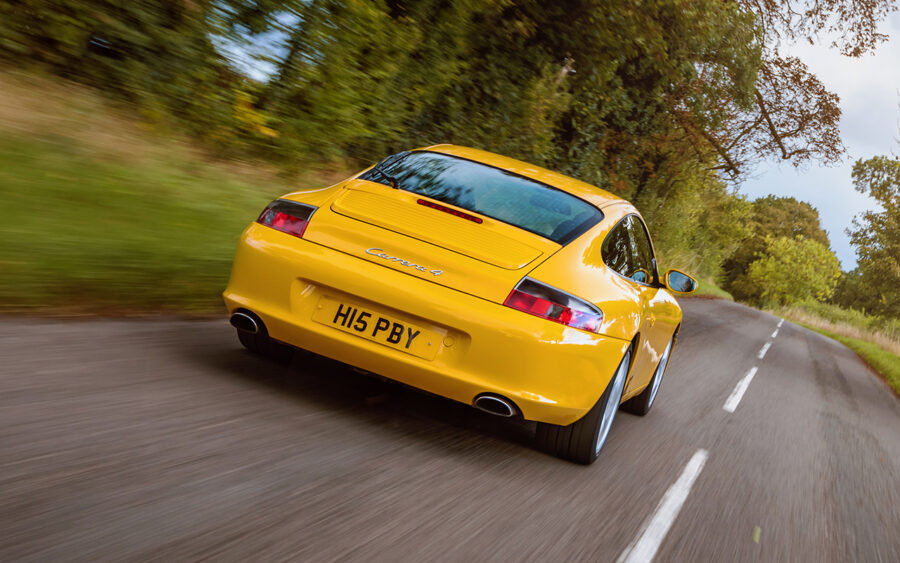
Bodywork
The easiest way to correctly verify the identity of the car you’re looking at is to check its Vehicle Identification Number (VIN). Make sure it matches what’s printed on the V5. Elsewhere on the same document, you’ll see the car’s engine number. Make sure it checks out.
Spend a tenner at mycarcheck.com, where you can download a history report outlining any insurance claims, change of registration number, recorded mileage and whether there is any outstanding finance on the Porsche you’re looking at. You should also enter the vehicle’s details into the DVLA’s online MoT database a service which will return all passes, failures and advisories registered as far back as records are stored.
Additionally, take advantage of the Suncoast Parts Porsche VIN decoder, which will provide you with a Porsche-specific build sheet in exchange for just $10. This document will let you know exactly how the car left the factory, including model specification and any Individual Equipment items optioned. We’ve lost track of the number of Porsche owners who have discovered their car makes use of a special feature they only found out about after ordering this report, although your local Porsche Centre or the car’s original dealer may be able to furnish you with the same information without charge.
The bodywork on the 996 is of the highest quality (Porsche provided a ten-year anti-rust warranty). With the exception of the area below the door catches (primarily early 996s), rust is rare and may therefore be evidence of a badly repaired smack. Check the bodywork carefully for dents and signs of repair. Also check underneath the car for a misshaped floorpan, another sure sign the car has been involved in an accident. Ask for details of the accident damage and repairs, and to see receipts for the work. Make sure you’re happy with the explanation and the quality of repairs before making an offer.
Elsewhere, corrosion of the exhaust fasteners, bolts and nuts is a common problem which can lead to exhaust leakage. A visual check of the underneath of the car will pick this up, but you will need access to a lift to get a proper view. There is no alternative to having the parts replaced.
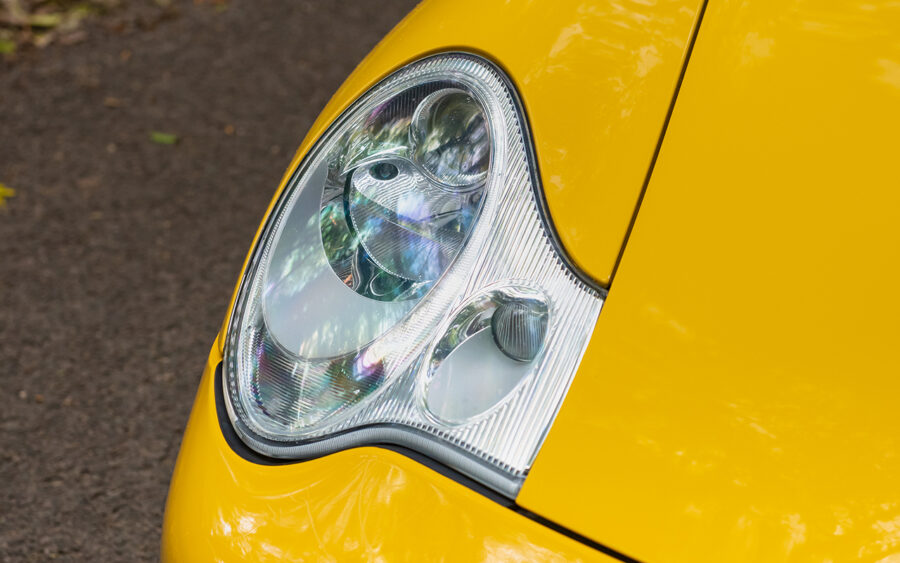
Plenty of 996 owners chose to upgrade the factory-fitted exhaust with a sportier alternative promising additional noise. It’ll sound great on a one-off test drive, but you may not find increased volume quite as pleasing to listen to every day. As with any modification, you should ask for details of the parts fitted and check that the work was carried out by a reputable Porsche specialist.
If you look forward to cruising through the countryside with the roof down in your 996, you’ll need to make a couple of simple checks when you inspect the car.
Problems with the Targa roof mechanism are unusual, but make sure you check it works properly as repairs can be difficult and expensive. The roof panels have a tendency to be a little rattly, but this can often be fixed relatively easily. Seek expert opinion if this is the only thing putting you off buying the car.
The Cabriolet roof is generally durable. Simon Walters, founder of Essex-based vehicle detailing company, Cambridge Concours , recommends a soft scrubbing brush to remove debris without scuffing the material. “Never jet wash,” he says. “You’re likely to draw dye out of the roof.” Recommending stock hose pressure, he suggests getting into every crease and seam (“especially around the rear window”) before drying with soft towels.
A Renovo recolouring agent will rejuvenate a sun-weary soft-top, but be patient with drying time. Test with a swab of kitchen towel before applying a sealing agent. Expect waterproofing to last three to five years, depending on whether your 996 Cabriolet is left exposed to the elements.
The 996’s alloy wheels are susceptible to kerbing damage and expensive to replace. If you can’t find a car with wheels in a good condition, remember to consider the cost of replacement or refurbishment when you’re working out how much you’re prepared to pay for the Porsche catching your attention.
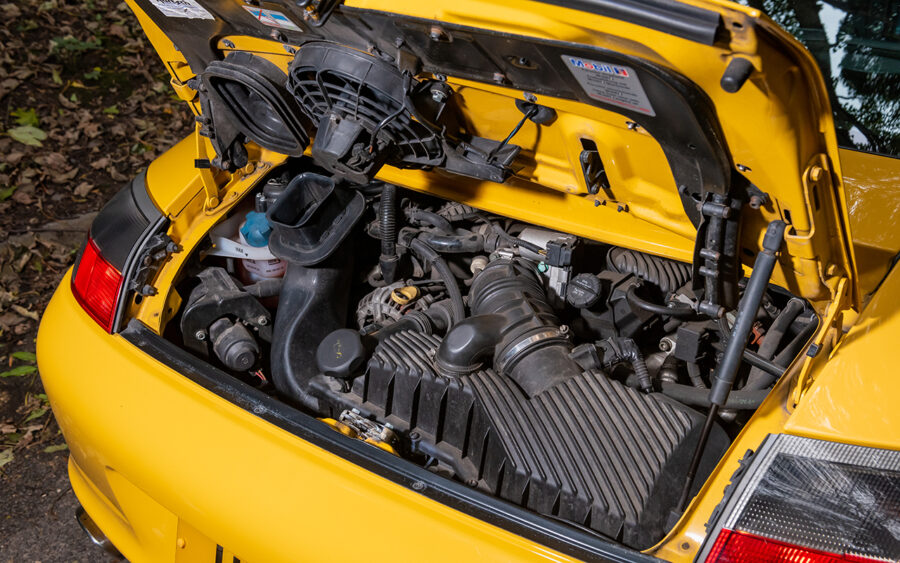
Engine and gearbox
Cracked cylinder heads were a problem on some early 996s. Reading forum posts may lead you to conclude there has been an epidemic of cracked cylinder heads and liners on M96 engines. In reality, the issue is relatively rare and the prominence of horror stories published online is due to unlucky owners venting after being on the receiving end of large repair bills. Unless you have access to specialist equipment, the problem is very difficult to spot in its early stages. Given the price of a replacement engine, it’s well worth investing in a borescope inspection before buying a 996, thereby helping you to establish if expensive failure is imminent.
A claim heard often is that cracked cylinder heads and liners occur between 25,000 and 50,000 miles. In truth, the problem can strike on higher mileage cars, too. A more relevant piece of information is to keep in mind early 3.4-litre engines have proved much more prone to this problem than the post-2001 3.6-litre units.
The rear main oil seals (RMS) were a weak point on Porsches of this era and leaks are not uncommon. Although the seal itself is an inexpensive part, labour for the work can be costly, primarily because the seal is very difficult to access. If you spot an oil leak on the 996 you plan to buy, ask a Porsche specialist to take a look. A leak doesn’t always mean the RMS needs to be replaced immediately — the work can often be delayed until a bigger job (such as changing the clutch) needs to be carried out, but it’s certainly something to note as likely to need attending to in the future.
One of the most serious issues on the 996 flat-six is failure of the factory-fitted IMS bearing, which can lead to catastrophic engine problems. The failure rate on models manufactured between 2000 and 2005 is around eight percent (according to various published statistics), so find out whether the car you are interested in buying has had a replacement part fitted before you make an offer. Many 996 owners opt to have a stronger IMS bearing and seal retrofitted as a precaution.
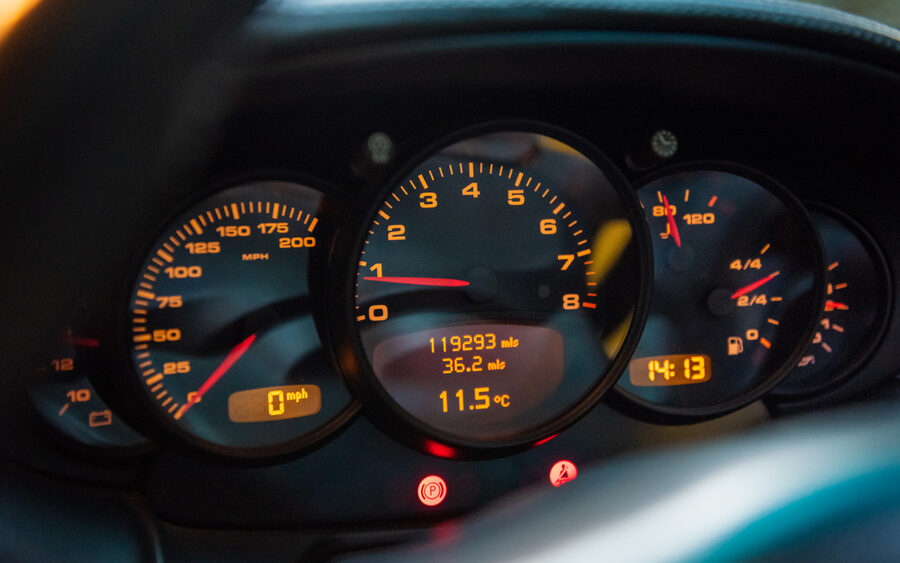
A misfiring engine (or one that sounds rough when running) may be a sign of problems with the ignition coil packs. Over time, heat from the engine and exhaust can cause the coils to expand and the insulation to crack. The only solution is to replace the parts. Thankfully, it will be relatively inexpensive to have the work completed by an independent Porsche specialist. The packs are likely to have to be replaced several times during the car’s lifetime.
Radiator corrosion can be a problem on 996s.The coolant radiators in the front bumper (and the air-conditioning condensers located directly behind them) are susceptible to stone chips and corrosion resulting from dirt, salt and leaves coming in through the air scoops. In an ideal world, the debris would be regularly cleaned away, but as the job involves removing the bumper, most 996 owners never attempt it, leaving plenty of time for damage to develop between services. Suspect radiators and/or condensers will need to be replaced to avoid overheating or the loss of air-conditioning.
The 996’s manual gearbox has proved to be reliable and light on the clutch, but the clutch is a wear and tear item and will eventually need replacing. Heavy pedal action is usually the sign the part is coming towards the end of its life, but a specialist will have no problems replacing it.
The Tiptronic gearbox has also demonstrated itself to be very reliable, but the cooling pipes have a tendency to rust after a few years of being exposed to dirt and salt from the roads. Replacing these parts is relatively inexpensive.
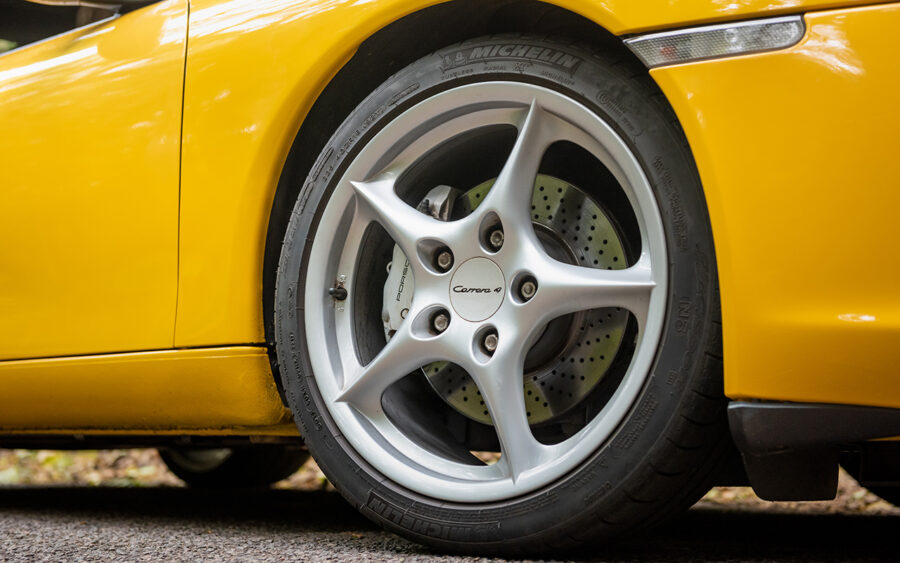
Suspension, steering and brakes
This incarnation of the 911 is much lighter on its stoppers than most sports cars of the same vintage, but as with all cars, the brakes do need to be replaced every few years. Make a visual check of the discs for signs of rust and warping, and also see if the car shakes or pulls one way when braking — these are signs the brakes will need replacing in the near future. If the pads and discs have been changed previously, ask to see the receipts for the work. It should have been undertaken by a Porsche specialist using high-quality parts.
The 996’s suspension was superb for its day and has proved to be very durable. The only problem you are likely to encounter is creaking or rattling from the front and rear corners, which is a sign the control arms are either worn or have been damaged on speed bumps. Replacing them is a simple and relatively inexpensive job, which will probably need to be done every three or four years. Parts are cheap and readily available.
Turbo versions of the 996 are fantastic to drive, but you should carry out extra checks for corrosion before buying one. Various elements of the turbocharger installation (and supporting equipment) are susceptible to rust even at relatively low mileage, which is why it’s sensible to ask a Porsche specialist to carry out an inspection before you agree to part with your money.
Porsche 911 (996): our verdict
To find out what you should be looking out for when buying a 996, we paid a visit to Revolution Porsche, an independent marque specialist based in Birstall in West Yorkshire. With qualified Porsche technicians taking care of all ages of 911, from early air-cooled cars to the very latest models rolling off the Porsche production line, the company has forged a firm reputation for offering friendly, expert advice, repair, servicing and restoration on all things Porsche.
While we were chewing the fat with Workshop Manager, Danny Kaye (a time-served Porsche technician who spent six years with Carlton Porsche before joining the Revolution team), he revealed his love for all-pawed 996s. “I’ve driven every kind of road-going Porsche you can think of, including regular stints in a 959, but when set up correctly, a four-wheel-drive, normally aspirated 996 is a truly excellent sports car. They handle well and drive brilliantly, but they don’t jump out at you, even in Carrera 4S guise, complete with Turbo styling and the red rear reflector panel, which is a clear nod to the air-cooled era.”
He sees now as a great time to buy. “All 996s are rising in value, but it’s difficult to lose money on a Carrera 4 or Carrera 4S if bought sensibly in the current climate. These are appreciating modern classics and can still be bought for sensible money.”

